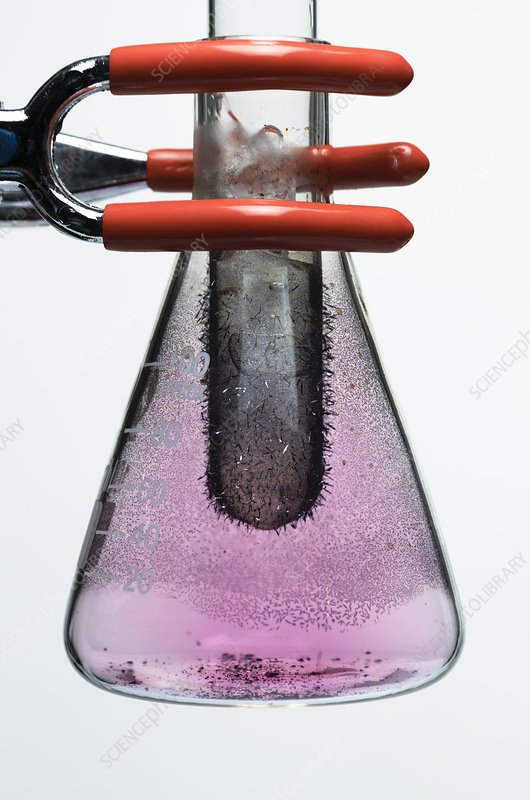Separation Methods of Substances in a Mixture
Evaporation
- In an aqueous salt solution (a solution where salt is dissolved in water), water and salt have formed a homogenous mixture. This means they can't be separated by filtration.
- If the water is evaporated (through boiling or leaving the mixture in the sun for example) from the solution, and only the salt remains, successfully separating both substances.
- This method is called evaporation.
Distillation
- However if the solution is distilled (evaporated in a way where the water gathers in a container or something similar, for example in a distillation flask) the water can be recovered.
- This is because the water vapor condenses back into water when its reduced in temperature.
- Ever seen a movie about someone surviving on an island? The survivors might collect ocean water and boil it, with another container or some way to collect the evaporated water above.
- With this method most unhealthy substances like salt can be separated from the drinking water.
Filtration
- Some substances form into large particles.
- Thus if we have a mixture with two distinct phases, and it can be separated by a filter.
- Take for example a mixture of water and sand. By putting the mixture through a filter paper or filtering flask, the sand gets separated from the water which can pass through the filter.
Examples
- A face mask is a filter that stops water droplets from coming out of the mouth and contaminating surfaces. However it still lets through air for breathing.
- In a juicing pot, the water, flavor and color from the berries are collected via water vapor, that then condenses and drips through, whereas berry skins, seeds and other unwanted parts remain on the other side of the filter.
- When drying fruits, they are left in the sun so that the water within them evaporates.
- Sometimes, multiple methods of separation need to be used to fully separate everything. Take for example, a mixture between salt, water and sand. The salt and water form a homogenous mixture, whereas the mixture between sand and water is heterogenous.
- The sand can be filtered away, whereas the salt and water can be separated via evaporation or distillation.
Sublimation
- Another method of separation is sublimation (sublimation is when a solid directly becomes a gas).
- In this separation method the solid in a mixture sublimes, and then crystallizes on the surface of a cooled test tube, and can be separated from the mixture.

- A flask with iodine. The iodine is slowly heated, and then it crystallizes on the walls of an ice-filled test tube.
Recrystallization
- Recrystallization is a method used to separate solid substances.
- In recrystallization, the impurities remain in the solvent.
- Raw sugar made from sugar beets is purified by a multitude of methods, but most importantly by recrystallization. In this example, the impure substance is dissolved in a small amount of hot solvent.
- As this solution is slowly cooled the sugar crystallizes, but the impurities still remain in the solution.
- This is because solids are more soluble in hot liquids than in cold liquids.
- When the impure solid compound is dissolved in the hot solvent and recrystallizes, it becomes separated from its impurities.
- The crystals can then be separated by filtration after they've crystallized.
Chromatography
- Chromatography is a method that separates substances based on their movement.
- It works in a similar method to how black ink will separate into multiple colors when dissolved on filter paper.
- In thin plate chromatography, or TLC (which stands for thin layer chromatography), a liquid rises up a porous plate.
- The liquid rises due to a phenomenon called capillary action, where liquids move through tight spaces due to surface tension.
- As it rises it extracts sample spots from the plate.
- The sample spots move along with the liquid across the plate, although some substances that adhere strongly to the plate lag behind.
- Thin plate chromatography can also be used to find out what substance an unknown sample is, by comparing it with known samples.
- The substances of the unknown sample are the same as the samples they horizontally align with.
Image Sources
https://www.sciencephoto.com/media/1005485/view/iodine-sublimation-and-condensation